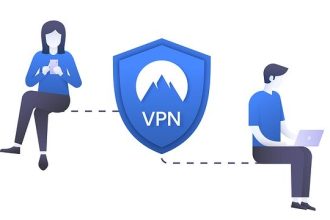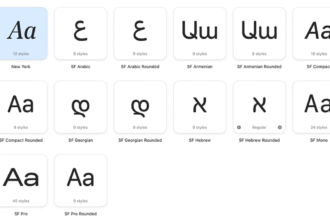Deadlines, meetings, presentations, and brainstorming sessions! The responsibilities of corporate employees have evolved and escalated in recent years. Moreover, post-COVID adjustments and the global digitization boom have been crucial factors, pushing organizations to expand and diversify their operations.
However, changing roles and responsibilities or rather the introduction of newness can hamper the productivity levels of an employee. Managers have to ensure that the team members are executing their deliverables while staying productive. How does one do that?
Well, it becomes simpler if you use resource planning in project management as a way to track and assess productivity. Read this blog to know how!
Understanding Productivity Tracking for Corporate Teams
By general rules, every organization has specific work hours set for each employee. However, you will often notice that in a team, some members get more work done than others. They never fall behind their deadlines. Why do you think that happens?
The reason is efficient time management skills and their level of expertise. These qualities help them with their productivity levels. However, that’s a personal effort they are making to streamline their duties.
But how can a manager track a team’s productivity and make sure that everyone is performing at their best? If not, then they can develop strategies to rectify the situation. That’s where productivity tracking through resource planning in project management comes in handy.
Productivity tracking refers to the process of measuring and recording the amount of work or output produced by an individual or team over a specific period of time. This can include things like the number of tasks completed, hours worked, or goals met.
Additionally, you can use the data from productivity tracking to identify areas where there is a need for improvement. You can further measure the effectiveness of different strategies for increasing employee productivity.
Don’t Confuse Productivity Tracking with Surveillance
Productivity tracking and surveillance of employees are related, but they have different goals and implications.
Productivity tracking focuses on measuring and understanding the output and performance of employees, with the goal of identifying areas for improvement and increasing overall productivity. This can include things like;
- tracking the number of tasks completed;
- hours worked, and;
- goals met.
You use the data for internal purposes and not to monitor or control employee behavior.
On the other hand, surveillance of employees focuses on monitoring and controlling employee behavior, often with the goal of ensuring compliance with company policies or detecting misconduct. This can include things like;
- monitoring emails and internet usage;
- tracking keystrokes and mouse movements;
- using cameras to monitor employee activity.
Organizations use the data from surveillance to assess employee performance and use it as a basis for disciplinary action.
It’s important to note that while productivity tracking can be a valuable tool for improving performance, surveillance can be seen as a violation of privacy and can have a negative impact on employee morale and trust.
How Does Productivity Tracking Help Your Team’s Performance
We can list at least 10 advantages of using productivity tracking through resource management software for improving team performance.
- Improved performance: Allows managers to identify areas where employees are excelling and where they may need additional support.
- Increased efficiency: Managers can see which processes and tasks are taking up the most time and resources. They can make adjustments to improve efficiency.
- Better goal setting: It helps in setting realistic and attainable goals based on one’s past performance.
- Enhanced accountability: With productivity tracking, employees are more likely to take ownership of their work and be accountable.
- Improved team collaboration: Help managers identify which teams are working well together and the ones need restructuring.
- Better resource allocation: By tracking productivity, managers can see where resources are being used most effectively and where they can be reallocated to improve results.
- Greater transparency: Productivity tracking can increase transparency and make it easier for managers to see how their department is performing as a whole.
- Improved employee engagement: When employees see that their productivity is being tracked, they may be more motivated to work harder and be more engaged in their work.
- Better decision-making: With access to accurate and up-to-date product data, managers can make more informed decisions about resource allocation, staffing, and other strategic issues.
- Better tracking of progress: Productivity tracking allows managers to monitor progress over time and make adjustments as needed to ensure that goals are being met.
Why Do You Need Resource Planning Software for Productivity Tracking?
A resource planning software with productivity tracking features allows organizations to measure and record the productivity of employees. Some common features include:
- Time tracking: How much time employees are spending on different tasks and projects.
- Task management: Assign tasks to employees, track progress, and set deadlines.
- Reporting and analytics: Generate reports and analyze data to identify trends and patterns in employee productivity.
- Goal setting: Set goals for employees and track progress towards achieving those goals.
- Collaboration tools: Share files, communicate with each other, and collaborate on projects.
- Mobile access: Track productivity from mobile devices, making it easy to access from anywhere.
- Integrations with other tools: Integrate with other tools like project management software, calendar, email, and CRM to provide an all-in-one solution.
Resource planning in project management can benefit an organization in the following ways:
- Identify areas that need improvement
- Assess overall employee productivity and team productivity.
- Determine employee engagement levels and set up appropriate goals.
- Also, help set a standard for optimum performance.
- Even distribution of workload.
- Time and cost saved in resources.
- Moreover, it allows for generating a better ROI.
eResource Scheduler for Resource Planning & Productivity Tracking
If you are looking for a tool that will help you with resource planning in project management while assessing the productivity levels of your employees, then eResource Scheduler is the one for you. It gives you enterprise-wide visibility of the resources, even when they are working remotely or from multiple geographies. The software was designed to improve and streamline the productivity of the employees. Additionally, it comes with advanced features like
- Ability to capture employee and project data with custom fields.
- Accurate resource and task scheduling.
- Interactive interface (drag & drop features, split bookings, extend & shorten bookings, etc.)
- Generation of configurable resource utilization report.
- Time tracking through intuitive and configurable timesheets.
- Also, generate a dedicated time-tracking report.
Therefore, as you can see, there are lots more you can benefit from for your organization. Connect with us for a free demo or schedule a consultation with our team. It’s time to streamline your productivity and performance levels with eResource Scheduler.















